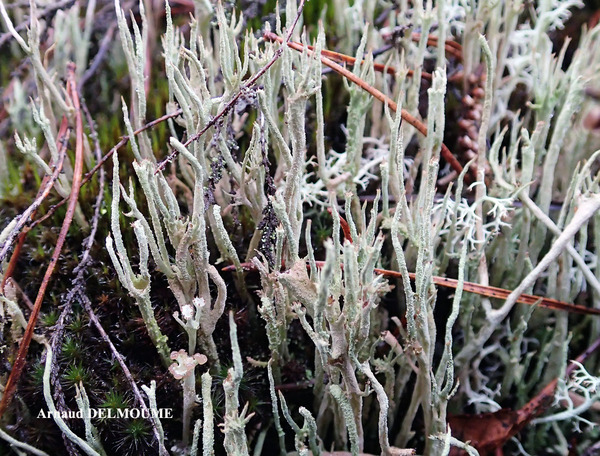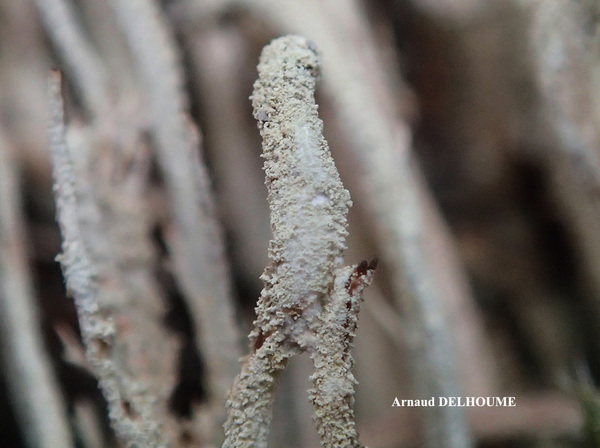Cladonia glauca Flörke
Clad. Comm.: 140, 1828.
Synonyms: Cladonia cenotea var. glauca (Flörke) Leight.
Distribution: N - Ven, TAA (Nascimbene & al. 2022), Piem (Isocrono & al. 2004), VA (Borlandelli & al. 1996, Piervittori & Isocrono 1997, 1999), Lig. C - Sar (Burgaz & al. 2020).
Description: Primary thallus squamulose, usually ephemeral, the squamules 1-3(-5) mm long and 1-2 mm broad, irregularly lobed, pale greenish white or glaucescent above, white beneath, esorediate or rarely sparsely sorediate. Podetia bacilliform, hollow inside, pale grey-green, partly browned, not melanotic at base, (2-)3-5(-8) cm tall, 0.5-2 mm thick, usually cupless, simple to sparingly branched above, with open axils and inconspicuous longitudinal fissures, corticate only at the very base, sometimes with a few, 2-3 mm long squamules in lower parts, otherwise farinose-sorediate, the soredia 20-70 μm in diam. Apothecia rare, dark brown, convex, often clustered. Asci 8-spored, clavate, thickened at apex, with a K/I+ blue tholus and a K/I+ strongly blue outer gelatinous sheath, Cladonia-type. Ascospores 1-celled, hyaline, ellipsoid. Pycnidia mostly apical, conical, with a colourless jelly. Conidia hyaline, curved. Photobiont chlorococcoid. Spot tests: K-, C-, KC-, P-, UV+ bluish white. Chemistry: squamatic acid, sometimes with traces of barbatic acid, very rarely with barbatic and thamnolic acids (K+ and P+ yellow).Note: a cool-temperate to boreal-montane, perhaps circumpolar lichen found on acid soil in open habitats in upland areas; most Italian records need confirmation.
Growth form: Fruticose
Substrata: lignum, soil, terricolous mosses, and plant debris
Photobiont: green algae other than Trentepohlia
Reproductive strategy: mainly asexual, by soredia, or soredia-like structures (e.g. blastidia)
Commonnes-rarity: (info)
Alpine belt: absent
Subalpine belt: extremely rare
Oromediterranean belt: absent
Montane belt: extremely rare
Submediterranean belt: absent
Padanian area: absent
Humid submediterranean belt: absent
Humid mediterranean belt: absent
Dry mediterranean belt: absent

Predictive model
Herbarium samples
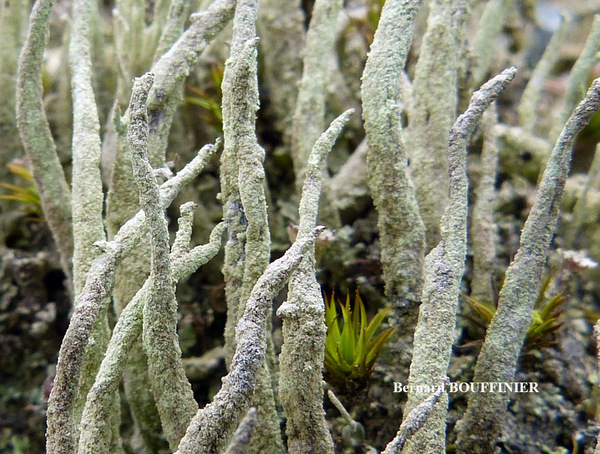
Bernard Bouffinier- Source: http://www.lichensmaritimes.org/index.php?task=fiche&lichen=754&lang=en
France, Poullaouen


P.L. Nimis; Owner: Department of Life Sciences, University of Trieste
Herbarium: TSB (14931)
2003/03/12
base of podetium with small squamules
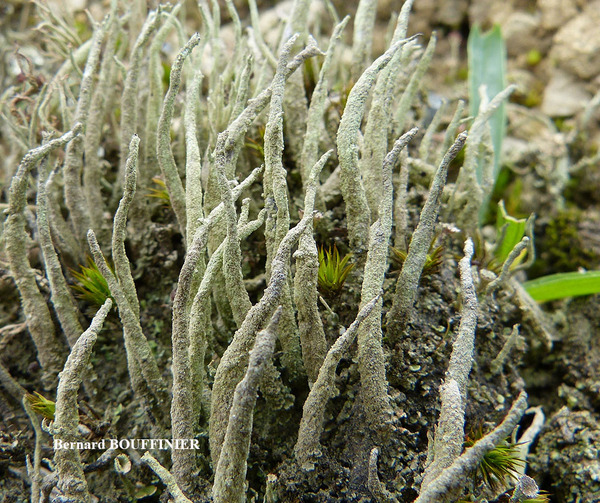
Bernard Bouffinier- Source: http://www.lichensmaritimes.org/index.php?task=fiche&lichen=754&lang=en
France, Poullaouen
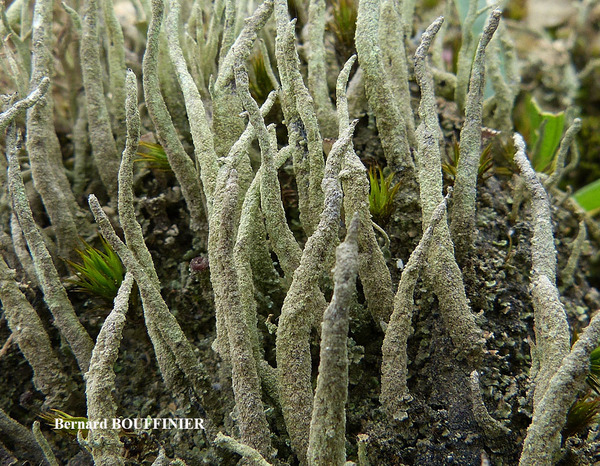
Bernard Bouffinier- Source: http://www.lichensmaritimes.org/index.php?task=fiche&lichen=754&lang=en
France, Poullaouen
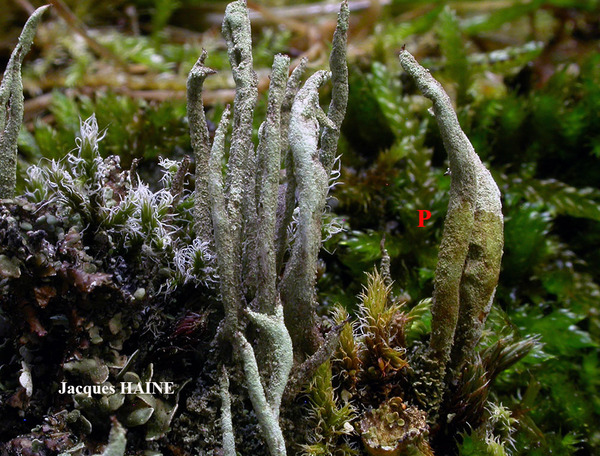
Jacques Haine - Source: http://www.lichensmaritimes.org/index.php?task=fiche&lichen=754&lang=en
France, Ardennes
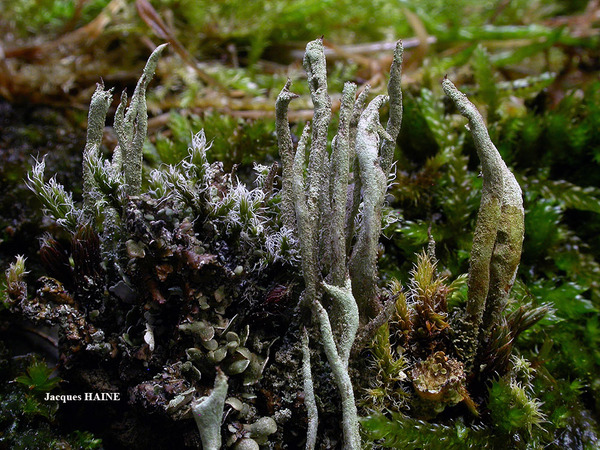
Jacques Haine - Source: http://www.lichensmaritimes.org/index.php?task=fiche&lichen=754&lang=en
France, Ardennes
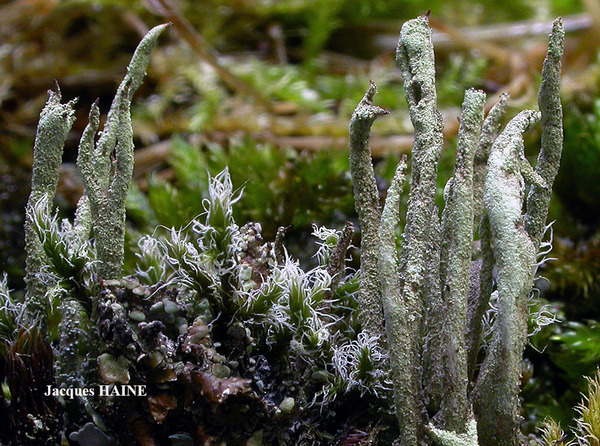
Jacques Haine - Source: http://www.lichensmaritimes.org/index.php?task=fiche&lichen=754&lang=en
France, Ardennes

Arnaud Delhoume - Source: http://www.lichensmaritimes.org/index.php?task=fiche&lichen=754&lang=en
France, Nievre
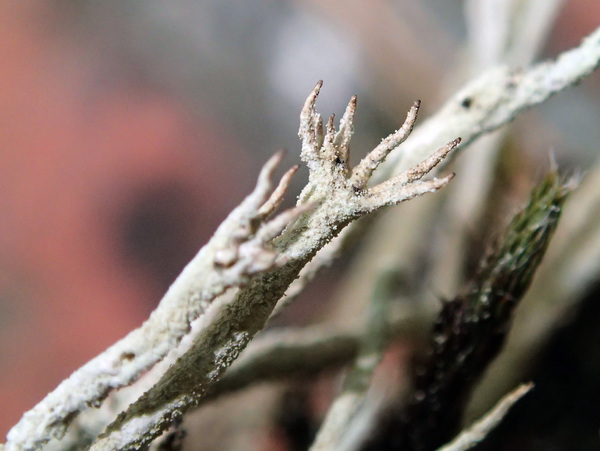
Arnaud Delhoume - Source: http://www.lichensmaritimes.org/index.php?task=fiche&lichen=754&lang=en
France, Nievre
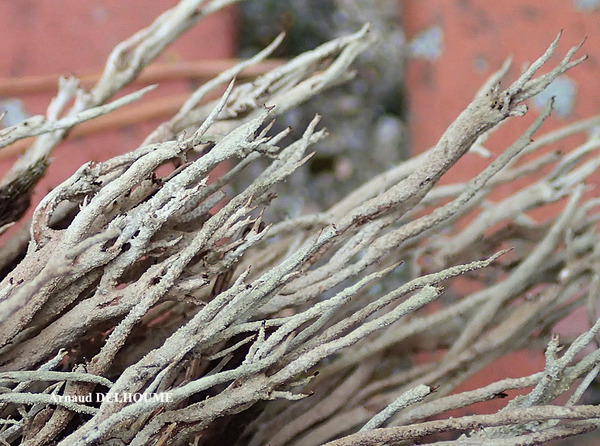
Arnaud Delhoume - Source: http://www.lichensmaritimes.org/index.php?task=fiche&lichen=754&lang=en
France, Nievre
Growth form: Fruticose
Substrata: lignum, soil, terricolous mosses, and plant debris
Photobiont: green algae other than Trentepohlia
Reproductive strategy: mainly asexual, by soredia, or soredia-like structures (e.g. blastidia)
Commonnes-rarity: (info)
Alpine belt: absent
Subalpine belt: extremely rare
Oromediterranean belt: absent
Montane belt: extremely rare
Submediterranean belt: absent
Padanian area: absent
Humid submediterranean belt: absent
Humid mediterranean belt: absent
Dry mediterranean belt: absent

Predictive model
| Herbarium samples |

Bernard Bouffinier- Source: http://www.lichensmaritimes.org/index.php?task=fiche&lichen=754&lang=en
France, Poullaouen


P.L. Nimis; Owner: Department of Life Sciences, University of Trieste
Herbarium: TSB (14931)
2003/03/12
base of podetium with small squamules

Bernard Bouffinier- Source: http://www.lichensmaritimes.org/index.php?task=fiche&lichen=754&lang=en
France, Poullaouen

Bernard Bouffinier- Source: http://www.lichensmaritimes.org/index.php?task=fiche&lichen=754&lang=en
France, Poullaouen

Jacques Haine - Source: http://www.lichensmaritimes.org/index.php?task=fiche&lichen=754&lang=en
France, Ardennes

Jacques Haine - Source: http://www.lichensmaritimes.org/index.php?task=fiche&lichen=754&lang=en
France, Ardennes

Jacques Haine - Source: http://www.lichensmaritimes.org/index.php?task=fiche&lichen=754&lang=en
France, Ardennes

Arnaud Delhoume - Source: http://www.lichensmaritimes.org/index.php?task=fiche&lichen=754&lang=en
France, Nievre

Arnaud Delhoume - Source: http://www.lichensmaritimes.org/index.php?task=fiche&lichen=754&lang=en
France, Nievre

 Index Fungorum
Index Fungorum
 GBIF
GBIF


